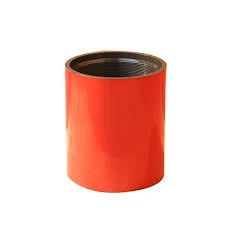- Afrikaans
- Albanian
- Amharic
- Arabic
- Armenian
- Azerbaijani
- Basque
- Belarusian
- Bengali
- Bosnian
- Bulgarian
- Catalan
- Cebuano
- Corsican
- Croatian
- Czech
- Danish
- Dutch
- English
- Esperanto
- Estonian
- Finnish
- French
- Frisian
- Galician
- Georgian
- German
- Greek
- Gujarati
- Haitian Creole
- hausa
- hawaiian
- Hebrew
- Hindi
- Miao
- Hungarian
- Icelandic
- igbo
- Indonesian
- irish
- Italian
- Japanese
- Javanese
- Kannada
- kazakh
- Khmer
- Rwandese
- Korean
- Kurdish
- Kyrgyz
- Lao
- Latin
- Latvian
- Lithuanian
- Luxembourgish
- Macedonian
- Malgashi
- Malay
- Malayalam
- Maltese
- Maori
- Marathi
- Mongolian
- Myanmar
- Nepali
- Norwegian
- Norwegian
- Occitan
- Pashto
- Persian
- Polish
- Portuguese
- Punjabi
- Romanian
- Russian
- Samoan
- Scottish Gaelic
- Serbian
- Sesotho
- Shona
- Sindhi
- Sinhala
- Slovak
- Slovenian
- Somali
- Spanish
- Sundanese
- Swahili
- Swedish
- Tagalog
- Tajik
- Tamil
- Tatar
- Telugu
- Thai
- Turkish
- Turkmen
- Ukrainian
- Urdu
- Uighur
- Uzbek
- Vietnamese
- Welsh
- Bantu
- Yiddish
- Yoruba
- Zulu
Understanding API Standards for Tubing and Casing Specifications in Oil and Gas Industry
Understanding API Tubing and Casing Charts
In the oil and gas industry, the safety and efficiency of drilling operations heavily depend on the selection and application of tubing and casing. The American Petroleum Institute (API) provides standardized specifications and guidelines that ensure the quality and reliability of these crucial components. Among these specifications, the API tubing and casing charts play a pivotal role in helping engineers and drilling professionals make informed decisions.
What are Tubing and Casing?
Tubing is the pipe through which oil, gas, or other fluids are produced from the well. It is placed inside the well, serving a dual purpose transporting resources to the surface and providing a controlled environment for fluid flow. Casing, on the other hand, is installed in the well bore to stabilize the well, prevent collapse, and isolate water or other unwanted formations.
Importance of API Specifications
The API establishes standards that promote safety, consistency, and interoperability in the oil and gas industry. The API tubing and casing charts specify dimensions, weight, and strength characteristics of various types of tubing and casing. This standardization helps drilling engineers select appropriate materials based on specific well conditions, such as temperature, pressure, and the type of formation being drilled.
Reading the API Tubing and Casing Charts
The API tubing and casing chart includes a wide range of information categorized by size, weight, and grade. The charts are divided into multiple sections, each detailing specific properties like outside diameter (OD), inside diameter (ID), wall thickness, and burst and collapse pressures.
When interpreting these charts, one must pay attention to the following key factors
1. Sizes and Dimensions The charts provide the outside and inside diameter measurements, which help determine the right fit for equipment used in the drilling process.
api tubing and casing chart

2. Weight Tubing and casing weight is crucial because it influences both the drilling operation and the design of the surface equipment. Lighter weights can reduce costs but may not handle high-pressure situations effectively.
3. Steel Grades Different grades, denoted by letters and numbers on the chart, reflect the tensile strength and corrosion resistance of the material. For instance, API Grade J55 is commonly used for low-pressure operations, while K55 and N80 are designed for higher strength requirements.
4. Burst and Collapse Ratings These ratings indicate the maximum pressure the tubing or casing can withstand without failure. Understanding these values is essential for engineers to ensure that materials can safely handle the pressures encountered during drilling and production.
5. Temperature Specifications Certain applications require materials that can withstand extreme temperatures. The API charts provide information on the thermal limits for different grades of tubing and casing.
Applications of Tubing and Casing Charts
The API tubing and casing charts are widely utilized across various stages of well development. During the design phase, engineers assess the well conditions and choose the appropriate type and grade of tubing and casing. These charts are not only essential for selecting materials but also for calculating potential production rates and estimating operational efficiencies.
In addition, API charts aid in maintaining compliance with regulatory standards. Proper selections prevent catastrophic failures, ensuring the safety of personnel and protecting the environment. Compliance with API standards also contributes to the overall reliability and reputation of the oil and gas operation.
Conclusion
API tubing and casing charts are indispensable tools in the oil and gas industry, providing critical data needed for decision-making throughout the drilling and production lifecycle. Understanding how to read and apply these charts effectively ensures that engineers select the right materials for their specific applications, promoting safety and efficiency in drilling operations. As the industry evolves, continuing to adhere to API standards will remain essential for fostering innovation while minimizing risks associated with drilling activities.
-
Tubing Pup Joints: Essential Components for Oil and Gas OperationsNewsJul.10,2025
-
Pup Joints: Essential Components for Reliable Drilling OperationsNewsJul.10,2025
-
Pipe Couplings: Connecting Your World EfficientlyNewsJul.10,2025
-
Mastering Oilfield Operations with Quality Tubing and CasingNewsJul.10,2025
-
High-Quality Casing Couplings for Every NeedNewsJul.10,2025
-
Boost Your Drilling Efficiency with Premium Crossover Tools & Seating NipplesNewsJul.10,2025







